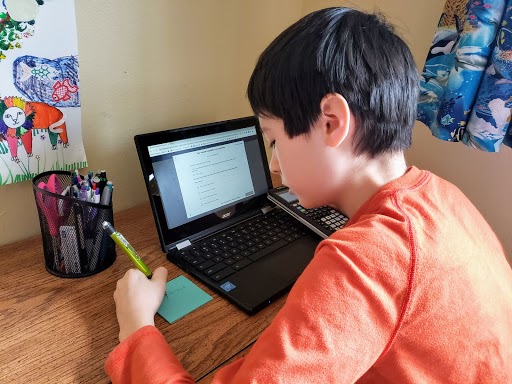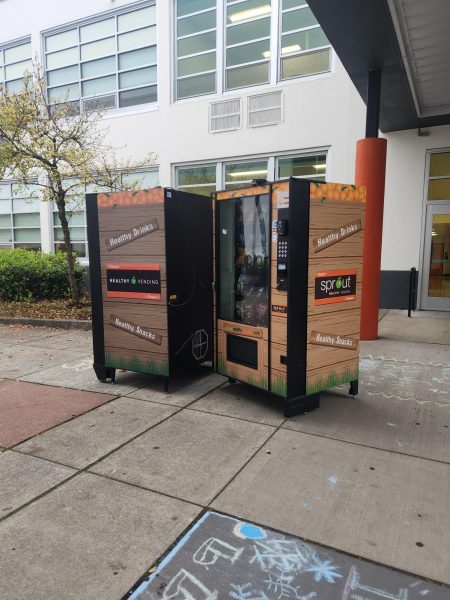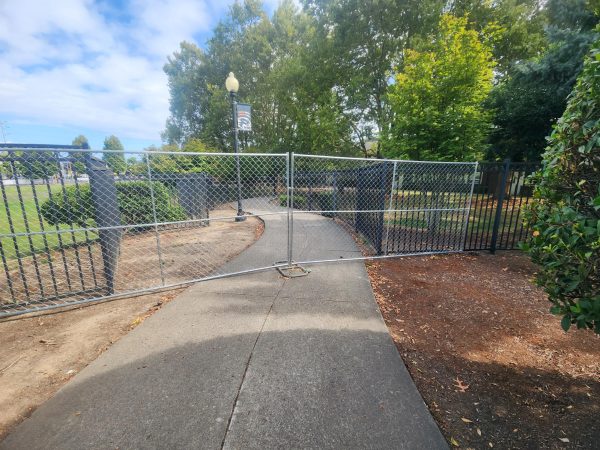Make the most of your online learning

A student delves into math at home.
Every day, updates come in regarding how long closures will last. Recently, several sources, including The Oregonian, have announced that schools are unlikely to open again until the next school year. With this comes uncertainty about what students will be doing over the next two and a half months. What will online learning look like? The district and BHS have answers and resources for students.
The district released Phase 2 of their online education plan, which includes a ten-day learning plan for students to stay engaged until a solid education plan for the rest of the year is made. Phase 2 is encouraged but remains optional due to students who may not have frequent access to their school email, Canvas, or the internet. Students are encouraged to use this time to prepare for Phase 3, which starts on April 13th and will be like regular school but online.
Due to the disruptions from closures that students and staff are facing, learning will be asynchronous, meaning that students can learn at whatever time works best for them during the day. Individual learning opportunities will be given by teachers on their day of instruction, which will correspond to the following: Monday will be periods 1 and 2, Tuesday 3 and 4, Wednesday 5 and 6, Thursday 7 and 8, and Friday will be dedicated to social-emotional learning with the possibility of one or two assemblies. Teachers will have office hours available for students to get support and connect with teachers.
Students should prepare within the next couple of weeks to take full advantage of online learning opportunities. Here are four simple ways to get ready for this change:
1: Have a dedicated workspace.
When you think of the traditional school environment, the first thing that comes to mind is probably a classroom…with desks. It’s ideal to have a desk in a well-lit area, but a kitchen counter, dining room table, or any other flat area with few distractions works fine. This workspace should have all the materials you need for school nearby: a charged Chromebook or computer, pencils, paper (for any assignments done on paper or for use as scratch paper), and a set of earphones or a headset for connecting with peers and teachers online.
2: Make a schedule.
With no rigid schedule, it can be easy to fall into poor sleeping habits and not get important work done. But making a schedule can promote productivity and have a sense of accomplishment when finishing a to-do list. Start by planning when you will go to bed, wake up, eat, have designated “school” time with breaks to avoid burn-out, exercise, and an activity that you enjoy (such as art, poetry, photography, etc.). Splitting up big chunks of learning with exercise, reading, or another activity is a great way to stay motivated and get work done. Use the following two weeks to test out some different schedules to get a feel of what works best for you.
3: Reach out.
Quarantine has led many to feel lonely and without support. Going into online learning, students may feel that increase as they work through assignments they would usually complete in a classroom full of peers. But now more than ever, communication is key. Checking in with friends from your classes is a great way to encourage each other and gain useful strategies on how to make your own learning more efficient or productive. Try holding group study sessions over a video call or sending a text to check on a peer’s progress with their learning.
This leads to the next crucial communication needed: between you and your teachers. Check your email and Canvas daily for updates and feel free to email your teachers with any questions you may have. Better yet, go to office hours. These will begin in Phase 3 and will be similar to Beaver Lodge, where students can go to teachers for help or to check-in.
4: Don’t stress.
This is a new system for everyone. Students, parents, teachers, and administrators all have to adapt to a new means of learning for the near future. The next two weeks are for students to work through some district-provided resources to continue their learning at their own pace. Students will become familiar with the process before anything will be graded, and teachers will be available to answer any questions students may have or help with any struggles they may encounter. Above all, this is a time to prioritize mental health and prepare for the new changes that online learning will come with.

Natalie Foote is a sophomore at Beaverton High School who writes articles for The Hummer and helps manage its social media platforms. She enjoys running...

Anouk is a senior who writes and edits articles, takes the occasional photo, and helps everything run in the background.

![District changes have led to restrictions on AP classes for underclassmen [Graphic made with Canva].](https://beavertonhummer.com/wp-content/uploads/2024/06/Comic-Bonanza-600x600.png)









beavertonhigh • Apr 3, 2020 at 10:09 am
Reblogged this on Beaver Tales and commented:
Via BeavertonHummer.com
LEARNING TRANSFORMS US.
#ExperienceBHS #ourBHSstory